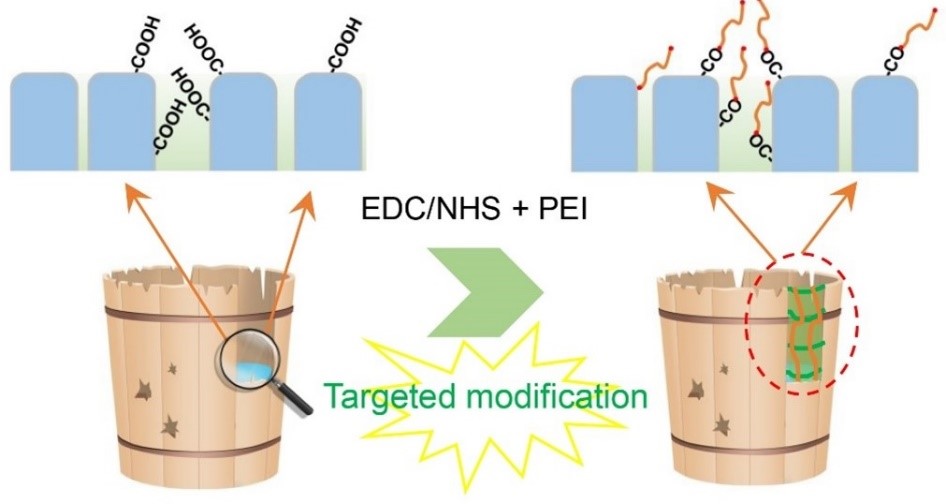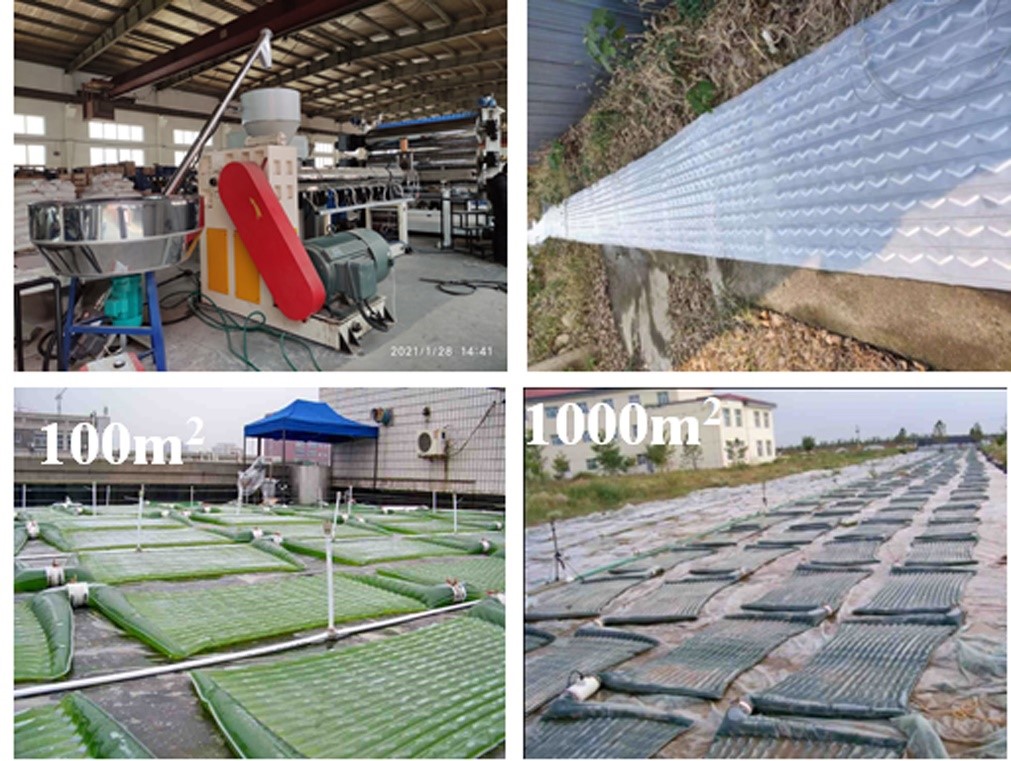We have verified “defect signal magnification-targeted surface modification” concept by preparing graphene oxide nanofiltration membrane, and found that targeted modification could narrow membrane pore size distribution, thus improving separation selectivity and antifouling performance; based on such new concept, we have selectively activated the carboxyl groups around the large pores of the polyamide membrane by N-(3-Dimethylaminopropyl)-N′ -ethyl carbodiimide (EDC) and N-hydroxy succinimide (NHS), and subsequently grafted molecules with amino groups on the membrane to reduce the effective pore size and electronegativity. The selectivity on monosaccharides and monovalent salt was improved by 250%, and the permeate flux only declined by 4.7% with much better anti-swelling ability during alkaline cleaning.

Fig.1 Targeted surface modification for improving separation selectivity of polyamide nanofiltration membrane
Aiming at low permeability of the commercially-available acid resistant nanofiltration (NF) membrane, based on molecular design, we have screened a novel acid resistant aqueous monomer with high reactivity, 3-aminobenzenesulfonamide, and prepared a NF membrane with highly hydrophilic surface, high permeability (increasing 10 times) and strong antifouling performance via surface activation assisted multi-step interfacial polymerization method; we also have prepared another acid resistant NF membrane with polyurea and poly(amide-sulfonamide) units, gradient pore structure (from small to large) and dually charged layer, via a two-layer reverse interfacial polymerization process, which has 100% higher permeability when keeping the same heavy metal ions rejections compared to the commercial acid resistant NF membrane.

Fig. 2 Structure and separation mechanisms of dually charged acid resistant membrane
A new thin-film flat plate photobioreactor (FPPBR) with high light efficiency and low cost was designed and produced through developing structure design, materials modification, strengthen and batch manufacturing technologies. A 1000 m2 thin-film FPPBR system was constructed and used for microalgae cultivation, the cost of microalgae cultivation decreased by 80% comparing to that of classical technique.

Fig. 3 Thin-film flat plate photobioreactor
 Search
Search



 京公网安备110402500047号
京公网安备110402500047号